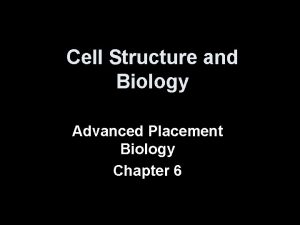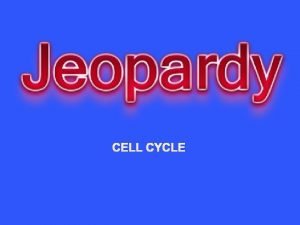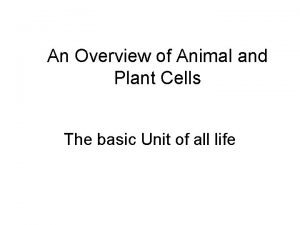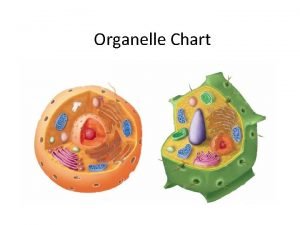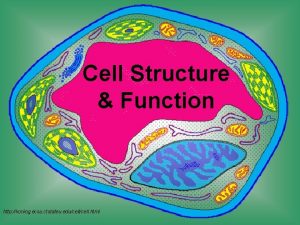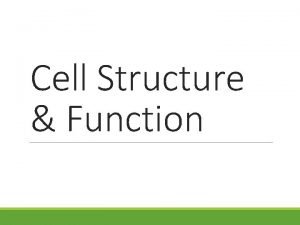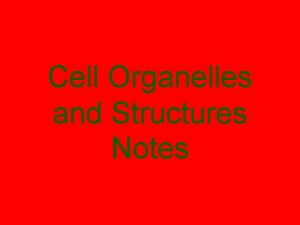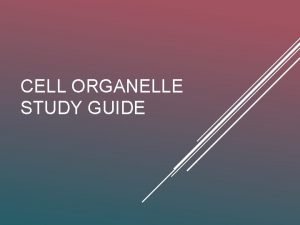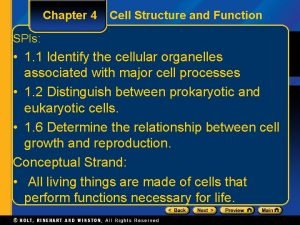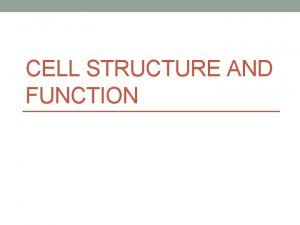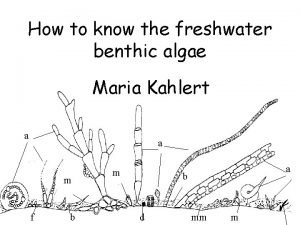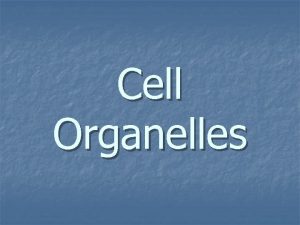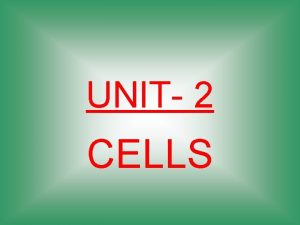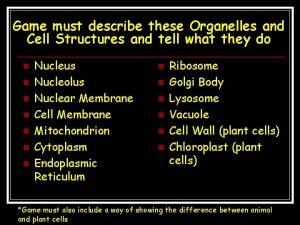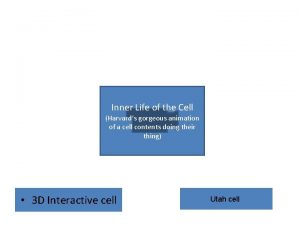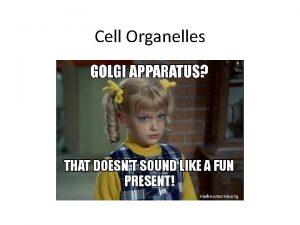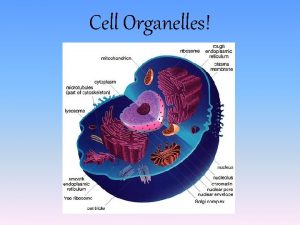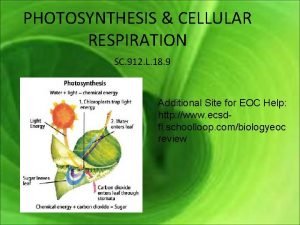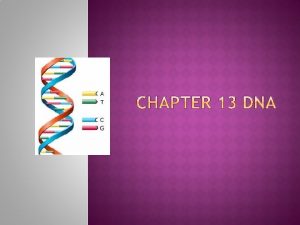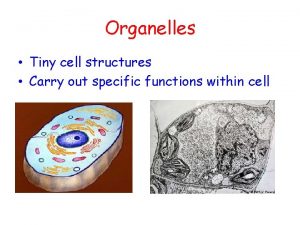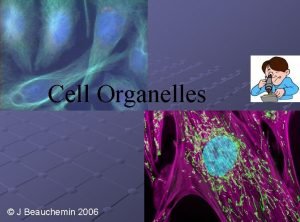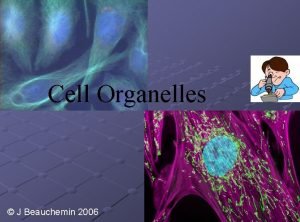Cell Processes Specific cell organelles carry out specific































- Slides: 31

Cell Processes Specific cell organelles carry out specific processes

Photosynthesis Carried out by Chloroplast Photosynthesis Formula: Water & CO 2 Oxygen & sugar

Cellular Respiration Carried out by mitochondria Converting sugar molecules to ATP l Remember: What’s ATP? Mitochondria takes in O 2 and sends CO 2 out –cell “breathing” Formula:

Cell Membrane, Transport, and Solutions

Engage Can you smell what is inside the balloon? Describe what “semi-permeable” means

Composition of the Fluid Mosaic Model Read This passage to fill in your notes. Any bolded words in the passage should be highlighted on your notes page. The cell membrane is also called the plasma membrane and is made of a phospholipid bilayer. The phospholipids have a hydrophilic (water attracting) head and two hydrophobic (water repelling) tails. Phospholipids can move sideways and allow water and other polar molecules to pass into or out of the cell. This is known as passive transport because it does not require energy and the water or molecules are moving with the concentration gradient. Embedded in the phospholipid bilayer are proteins that also aid in diffusion and in cell recognition. Proteins called integral proteins go all the way through the bilayer while peripheral proteins are only on one side. Large molecules like cholesterol or carbohydrates use proteins to help move across cell membranes.

Membrane structure Phospholipids~ membrane fluidity l l Heads are hydrophilic Tails are hydrophobic

Composition of the Fluid Mosaic Model Read This passage to fill in your notes. Any bolded words in the passage should be highlighted on your notes page. Another type of lipid in the cell membrane is glycolipid that makes the membrane more fluid. Embedded in the phospholipid bilayer are proteins that also aid in diffusion and in cell recognition. Proteins called integral proteins go all the way through the bilayer while peripheral proteins are only on one side. Integral proteins are also called surface proteins. Large molecules like cholesterol or carbohydrates use proteins to help move across cell membranes.

Cell/Plasma Membrane Functions Moves materials in and out of cell Maintains homeostasis (balance of materials in/out of cell) Attaches to cytoskeleton to provide shape Protects what’s inside the cell

The Structure of the Plasma Membrane CLICK HERE TO WATCH A VIDEO ABOUT THE CELL MEMBRANE YOU MUST WATCH THE VIDEO BEFORE MOVING ON

Membrane structure Cholesterol/Carbohydrates~ membrane stabilization and fluidity

Membrane structure Integral proteins~ proteins positioned within the membrane Peripheral proteins~ proteins on surface of membrane

The Structure of the Plasma Membrane Now, it’s time to color the picture on the back of your page. A. Phospholipid bilayer B. Integral protein C. Surface (peripheral) protein D. Phosphate heads E. Cholesterol/carbohydrate F. Fatty acid tails **cross out glycoprotein and glycolipids

Activity- Membrane Coloring Peripheral Cholesterol Phospholipid bilayer Integral protein Phosphate heads

Membrane Structure- Recall What are the general structures found in the cell membrane? l l Phospholipids Cholesterol/Carbohydrates Integral proteins Peripheral proteins

Now, you need the “Membrane Traffic” sheet Passive Transport l l Diffusion Osmosis Active Transport l Endocytosis • Phagocytosis • Pinocytosis l Exocytosis

Passive Transport Does NOT require energy because molecules move WITH the flow of traffic Osmosis l Movement of water molecules WITH the concentration gradient Diffusion l Movement of any other molecules WITH the concentration gradient

Active Transport Requires Energy called ATP (form of energy made by mitochondria). Moves against the concentration gradient. 2 types l Endocytosis (2 kinds) • Phagocytosis • Pinocytosis l Exocytosis

Endocytosis Transporting material into a cell by the folding in of the cell membrane. Two types: l l Phagocytosis- Solid particles are ingested into the cell. Pinocytosis – liquids taken into the cell.

Exocytosis Moves materials out of the cell

Check for Understanding Osmosis is the diffusion of _______ across a cell membrane. Osmosis and Diffusion are both types of _____ transport. Passive transport does or does not require energy? Energy is known as ATP. T or F Small molecules cannot move across freely. T or F Large molecules can move freely. T or F

Next, fill in the information for “Solutions” on the back Solutions- 3 Types Isotonic Solution Hypertonic Solution

Isotonic Solution The solute outside the cell is equal in concentration to the solute in the cell. The cell retains its shape. water moves equally in both directions l Before after » They look exactly the same

Hypotonic Solutions Solution outside the blood cell contains a lower concentration of solute than inside of the cell. Water will diffuse in. l cell will lyse (burst). Animal cells – called cytolysis. Plant cells do not burst- cells create turgur pressure because of the cell wall—grocers use this idea

Cells in a Hypotonic Solution

Hypertonic Solutions The solution outside the cell has a higher concentration of solute than inside of the cell. Water will diffuse out of the cell, l causing the cell to shrink Why should you not salt meat before cooking? l think about what salt does to your body; meat will be dry CRENATION PLASMOLYSIS

Cells in a Hypertonic Solution

Quick Review (check for understanding) The next few slides will review the information about solutions. Number your paper 1 -8 Your answer choices are l l l Hypertonic Isotonic Hypotonic Answers will be used more than once

In what type of solution would these cells be found? 1 2 3

Water balance Summary 4 5 6

Classify the following terms as hypertonic, hypotonic, or isotonic 7. Plasmolysis 8. Turgidity
 What figurative language is you're my kryptonite
What figurative language is you're my kryptonite Concurrent in os
Concurrent in os Label the organelles in the composite cell
Label the organelles in the composite cell During interphase a cell grows duplicates organelles and
During interphase a cell grows duplicates organelles and Plant cell
Plant cell Cell wall fun facts
Cell wall fun facts Cell organelles song
Cell organelles song White blood cell organelles
White blood cell organelles Cytoplasm
Cytoplasm Cell organelles study guide answer key
Cell organelles study guide answer key Which of the following pairs contains unrelated items?
Which of the following pairs contains unrelated items? Cell organelles structures and functions organizer
Cell organelles structures and functions organizer Organelle functions chart
Organelle functions chart Analogy for mitochondria in a house
Analogy for mitochondria in a house Cell organelles
Cell organelles Cell organelle graphic organizer answer key
Cell organelle graphic organizer answer key Cell organelles vocabulary
Cell organelles vocabulary Plant cell
Plant cell Organelle definition
Organelle definition Cell organelles animation
Cell organelles animation Cilia is used for
Cilia is used for Cell organelles
Cell organelles 1665 hooke
1665 hooke Cell organelles review
Cell organelles review Protist cell organelles
Protist cell organelles Carrying out research
Carrying out research Extension work project
Extension work project The crucible final test
The crucible final test What function does atp carry out in living things
What function does atp carry out in living things Food tests questions
Food tests questions What stores information in a cell?
What stores information in a cell? Neuronal processes
Neuronal processes


